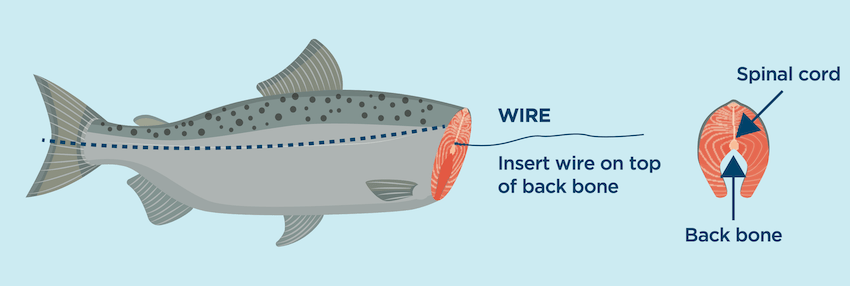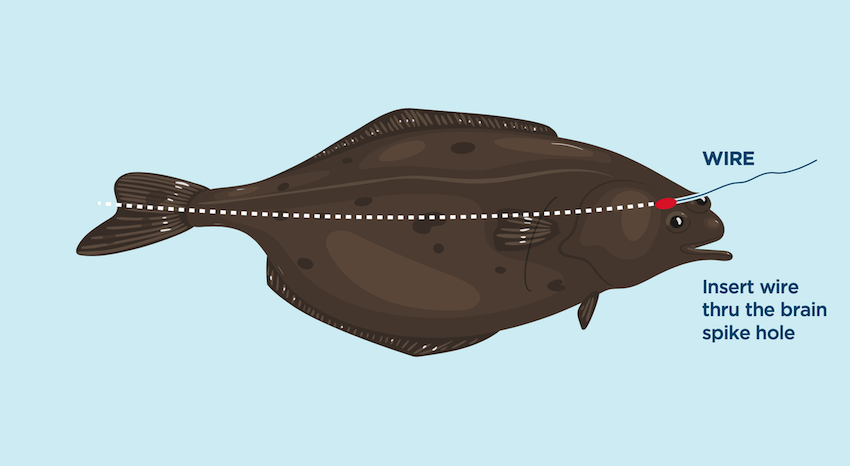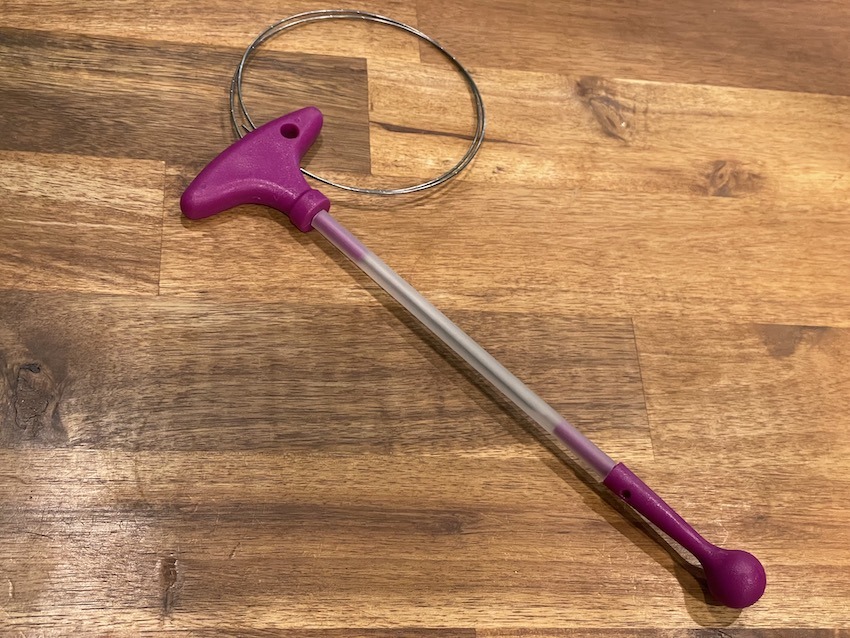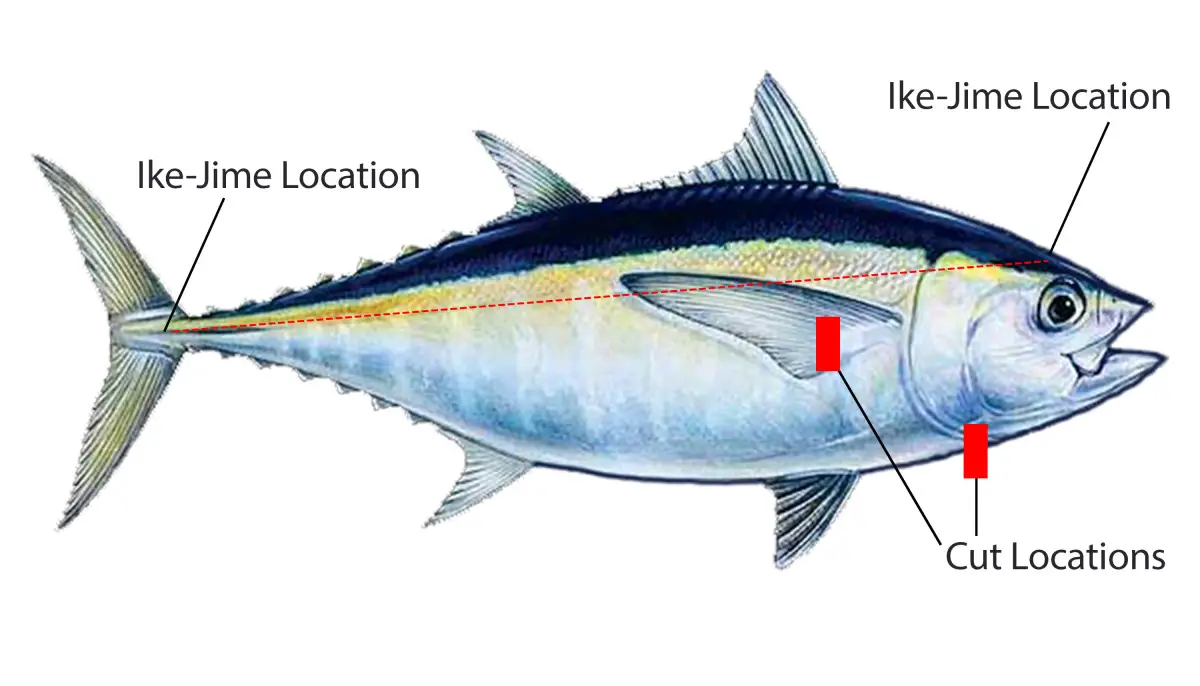Worldwide fishermen and seafood chefs believe using this formula, their tips, and principles, fishermen can create the difference between freshness and a superior product that transcends any other biochemically product taking this type of food to another level. What is the Shinkei jime Method for Killing Fish?
Shinkei Jime Method:
- Quickly kills fish by inserting a spike into its brain
- Inserts a wire into the spinal cord
- Making an incision near the gills or tail for bleeding-out fish
- This Reduces Stress
- Prevent Rigor Mortis
- Enhanced Flavor Preserves natural taste
- Keeps meat firm and smooth
- Extends freshness of the fish
The shinkei-jime method has been used in saltwater tuna and yellowtail, sport, and game fishing, along with freshwater sport fishing as it provides a rapid slaughter technique. As an alternative to cutting their throats and leaving the fish to die by bleeding or suffocating on a deck or dock.
What is the Shinkei jime Method for Killing Fish
Shinkei jime Method 1
Ike-jime and shinkei-jime are Japanese methods of humanely killing a fish, which have been used all over Asia for many decades. Ike-jime spikes the brain; then shinkei-jime destroys the spinal cord. Ike-jime kills the fish so that it doesn’t even know it is dying, which helps maintain the meat quality. Of course, proper icing is still required. Let’s look at the tools and how to perform ike-jime and shinkei-jime on any fish.
Shinkei Jime is then the next level, destroying the spinal cord to prevent the production of lactic acid and cortisol, both of which lower the quality of the flesh. The process is very specialist and labor-intensive and this is therefore reflected in the price of the fish, but many folk agree with us that the premium is more than worth it. Shinkei Jime is spinal cord destruction that will completely shut down the fish’s nervous system, and keep it from firing fight-or-fight adrenaline to the flesh.
The fish does not know it is dying, and the meat just relaxes and retains a fresh texture. There are a few ways of performing shinkei-jime. There are two methods of performing ike-jime, both of which put the fish out of its misery with very little stress:
The first separates the brain from the nervous system. Cut the fish’s head off from the neck down around the gill (Method 1).
The first method is done after the head is cut off. Find the backbone of the fish; between the backbone and the dorsal fins, you’ll find the spinal cord. Insert a wire or rod into the spinal cord to damage it

Hold on to the fish—it will flail about until you completely damage the spinal cord, but it soon becomes calm and the meat relaxes. The wire or rod inserted should be the same length as the fish. The second method is through the brain spike hole
Japanese Iki Jime Method is the fastest, most humane way of euthanizing fish, eliminating stress & lactic acid & maintaining quality by:
inserting a spike into the brain
- Cutting gills to bleed out
- Inserting a thin piece of wire into the spike hole & down the spinal column……………………………………….read more
Tools commonly used for Shinkei Jime include
- Ike Jime Spikes: Specialized spikes for quickly piercing the fish’s brain to induce immediate death.
- Bleeding Knife: A sharp knife used to make precise incisions near the gills or tail to bleed out the fish.
- Wire or Rod: Inserted into the spinal cord to destroy it, preventing muscle contractions after death.
- Cutting Board: Provides a stable surface for performing the procedure safely and effectively.
- Bucket or Basin: Used for collecting blood and ensuring a clean workspace.
- Towel or Cloth: Helps maintain a firm grip on the fish and keeps hands clean during handling.
- Cleaning Equipment: Brushes or sponges for cleaning and sanitizing tools between uses.
- Storage Containers: Properly storing the fish after processing to maintain freshness.
- Protective Gear: Gloves and aprons for personal protection against fish scales and fluids.
- Training Materials: Guides, videos, or workshops for learning and refining Shinkei Jime techniques.
Shinkei jime Method 2

In this method, it can sometimes be difficult to locate the spinal cord, and it can be especially difficult to insert the wire in a bigger fish like rockfish. Once you insert a wire through the hole and into the spinal cord, the fish’s nervous system will react.
After you have done ike-jime and shinkei-jime, remember to bleed the warm blood completely from the fish. There are many ways to do it.
You can cut the gill and massage the blood out or pressure bleed it. Bleeding the fish slows rigor mortis and helps get rid of that “fishy” taste.
Properly icing down the fish also will delay rigor mortis and maintain top-quality meat. Put the fish on ice to keep it fresh. After you kill and bleed your fish, remove the guts, gills, and blood without exposing the flesh.
You are ready to cool your fish down completely. Insert ice in the cavities and on the skin. This will chill the fish meat from the inside and outside. To chill the fish even better, you want to make an ice slurry mixing saltwater with ice which chills the fish by covering all the contact surfaces.
This is a very important step for tuna fishing. Commercial fishers flash-freeze their catch whole. For sports fishermen, use salt ice slurry on the boat to chill the fish fast. You might have a window of 2 to 4 hours to get the fish chilled before it gets completely stiff and then starts decaying.
When you take the fish out of the cooler to the cleaning table, you will notice that the skin color hasn’t changed and the fish is not stiff. It still will be floppy like a fresh, live fish. Some people say it’s harder to fillet, but the improved meat quality makes the process worth it.

By killing your fish properly and chilling rapidly, you can achieve near sashimi-grade quality with your catch. The next step is to vacuum seal your catch and freeze it at -4°F for
7 days to kill off parasites for sashimi or ceviche (raw) consumption. The better you look after your catch, the better fish maintains freshness and quality.
After you have done ike-jime and shinkei-jime, remember to bleed the warm blood out of the fish. There are many ways to do it. You can cut the gill and naturally massage the blood out or pressure bleed it. Bleeding the fish slows rigor mortis and helps get rid of that “fishy” taste.
Properly cooling down the fish also will delay rigor mortis and maintain top-quality meat. We put the fish on ice to keep it fresh, but is putting ice on the skin enough? After you kill and bleed your fish, remove the guts, gills, and blood without exposing the flesh.
Now you are ready to cool your fish down completely. Put ice in the cavities and on the skin; this will chill your meat from inside and outside. To chill the fish even better, you want to make ice slurry (mixing saltwater with ice), which chills the fish by covering all the contact surfaces. This is very important for tuna fishing. Commercial fishers flash-freeze their catch whole. For us sport anglers, the best we can do is use salt ice slurry on the boat to chill the fish rapidly. You might have a window of 2 to 4 hours to get your fish chilled before it gets completely stiff and then starts decaying.
When you take the fish out of the cooler to the cleaning table, you will notice that the skin color hasn’t changed and the fish is not stiff—it still will be floppy like a fresh, live fish. Some people say it’s harder to fillet, but the improved meat quality makes it worth it. The meat is exactly like fresh, with very little or no gapping, especially on rock cod, lingcod, halibut, and tuna. By killing your fish properly and chilling rapidly, you can achieve near sashimi-grade quality with your catch. The next step is to vacuum seal your catch and freeze it at -4°F for
7 days to kill off parasites for sashimi or ceviche (raw) consumption. The better you look after your catch, the better fish you’ll be able to put on your table. Give it a try!
How Do You Bleed Out a Fish Humanely?
- After killing fish by Humanely-clubbing the head or Spiking the brain
- Sever the main artery inside the gills
- Make a cut at the fish’s tail
- Let muscles & heart pump out the blood
- Hang upside down in a bucket of water to drain blood
- Use current from the stream to wash out blood.…………………………………………………………. Read more

References:
WyldeMarket- Ike Jime & Shinkei Jime
FAQ’s
- What is Shinkei Jime? A: Shinkei Jime is a traditional Japanese method of fish killing that involves quickly destroying the fish’s brain and spinal cord to enhance meat quality by preserving texture and flavor.
- Why is Shinkei Jime used? A: It is used to prevent the release of stress hormones and lactic acid, which can deteriorate the fish’s meat quality, ensuring better flavor, texture, and a longer shelf life.
- How is Shinkei Jime different from other fish killing methods? Unlike other methods, Shinkei Jime focuses on reducing stress and rigor mortis in the fish by quickly destroying the brain and spinal cord, which preserves the fish’s optimal quality.
- What are the main steps of Shinkei Jime? The main steps are Ike Jime (quickly killing the fish), bleeding (removing blood from the fish), and destroying the spinal cord (to prevent muscle contractions).
- What is Ike Jime? Ike Jime is the initial step in Shinkei Jime where a spike is inserted into the fish’s brain to quickly kill it, minimizing stress and improving meat quality.
- Why is bleeding the fish important in Shinkei Jime? Bleeding removes blood from the muscles, which helps prevent spoilage and enhances the flavor and appearance of the fish meat.
- How does destroying the spinal cord benefit the fish meat? Destroying the spinal cord prevents post-mortem muscle contractions, which can damage the meat and affect its texture, ensuring the fish remains tender and smooth.
